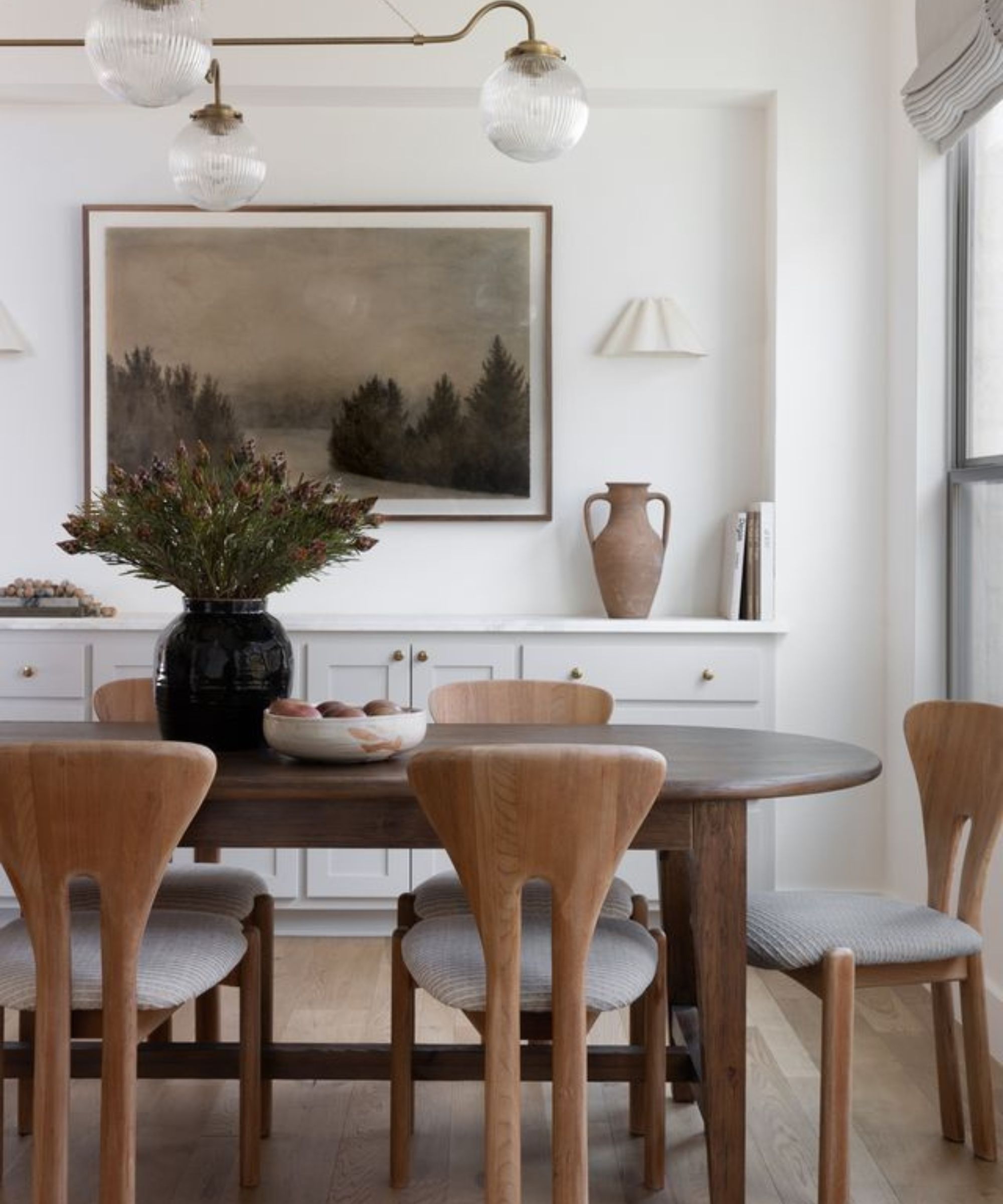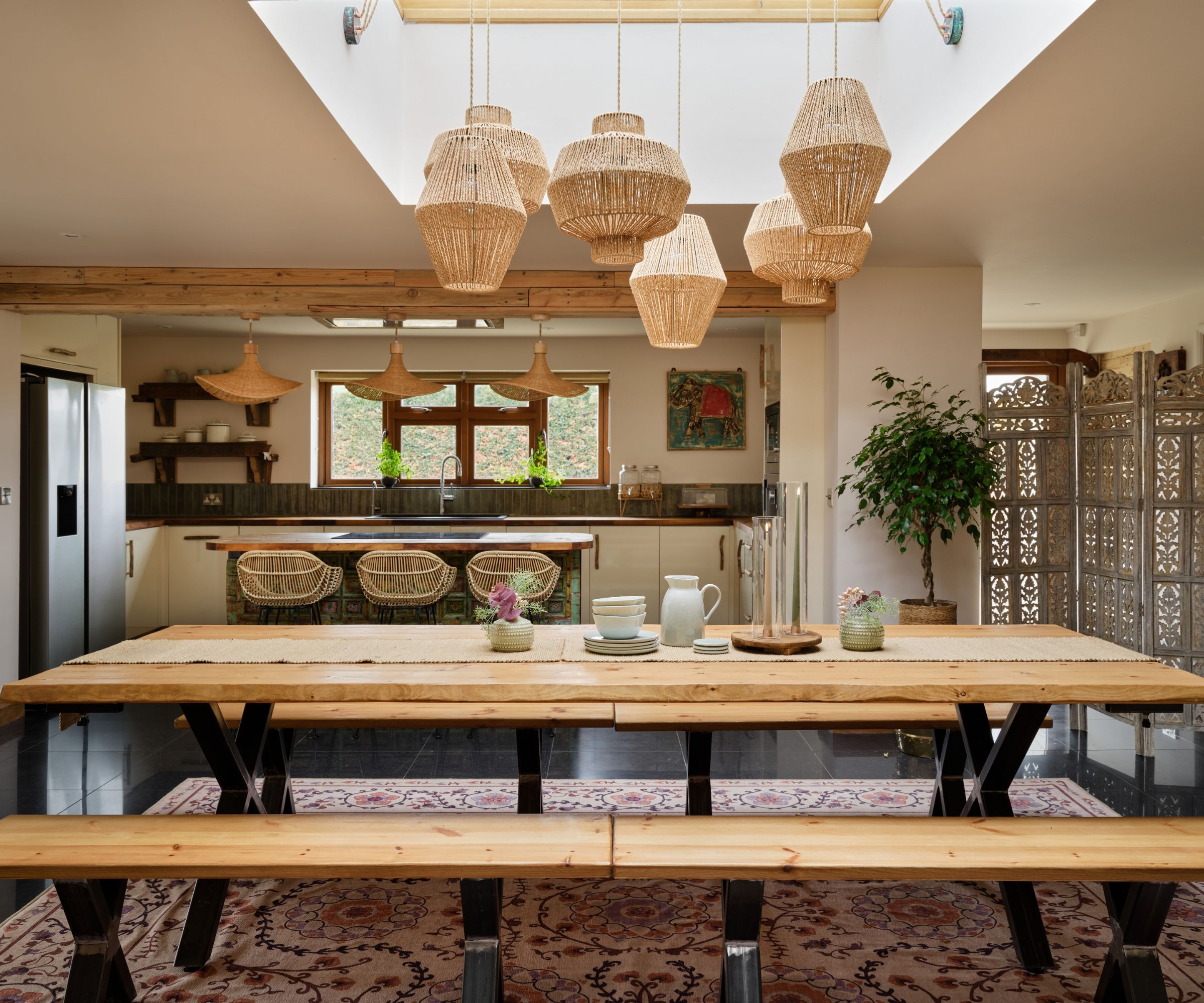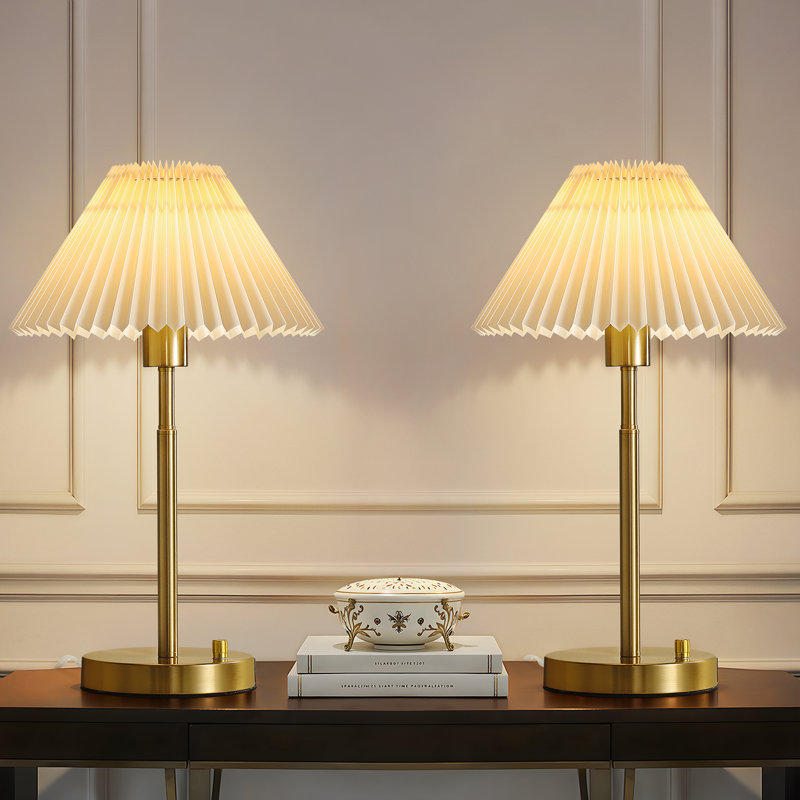Designers Say This is the Perfect Formula for Lighting a Dining Room to Make it Feel Cozy and Conversational – And it Doesn’t Mean Ditching the Overhead Light
These steps will lead you to the perfect blend of function and ambiance


A careful balance is required when lighting a dining room. It needs elements of functional lighting, yet depends on ambiance and a softer glow to create the perfect atmosphere for hosting, dining, and quiet evenings.
Which is why your dining room lighting ideas can be some of the trickiest to get right. You want to create the same warmth and coziness as a living space, but ditching the big light is a big no when it comes to functionality. So what's the solution?
It turns out, interior designers have mastered the perfect formula for lighting a dining room that combines the best of cozy ambiance and function for the perfect hosting space.
1. Start With Layers

For most people, the dining room is the heart of the hosting season. It's where you gather with loved ones and enjoy a home-cooked meal together. But as a social and dining space, how can you get the lighting scheme right?
'I always start with layers. Layers in lighting are crucial to having a well-planned lighting formula,' says Michelle Murphy, founder and designer at DEMI RYAN, who emphasizes the need for different sources to balance function with softer ambiance.
'Overhead, ambient, and accent lighting, a chandelier or statement pendant anchors the space, while sconces, picture lights, or even small lamps on a console soften the room. I find a 2:1 ratio of ambient to accent lighting creates a balanced glow that feels both intentional and inviting,' she explains.
As well as layering these three different types of lighting, Kate Aslangul, founder and creative director of Oakley Moore, explains that layering fixtures at different heights within the dining room is important, too.
Design expertise in your inbox – from inspiring decorating ideas and beautiful celebrity homes to practical gardening advice and shopping round-ups.
'I like to layer light at different heights: wall lights, table lamps, and either a single central pendant over a small table, or an uneven multiple of pendants for one that is longer, to add depth and warmth. Pendants should hang around 90cm (35") above the table to create intimacy.'
2. Choose a Soft but Statement Ceiling Light

One of the biggest factors in dining room lighting is that the ceiling light plays a huge role in a successful scheme – it makes a strong case for keeping the controversial big light in this cozy-meets-practical room. And there are plenty of ways to make it a beautiful focal point.
'I'm a big fan of a chandelier as a focal point in the dining room, so I definitely do not ditch the overhead light here. Chandeliers with glass drops and candles creating reflections in the glass have been used to light dining spaces for centuries, and we still try to create that same intimate atmosphere today,' explains Jo Plant, Pooky Lighting's chief creative director.
For a dappled lighting effect, the Glacier Chandelier by Regina Andrew is a stylish choice, or for something more classic, the Rita Chandelier from Pooky would look beautiful above a dining table.
It's also worth considering how the light diffuses from your chosen fixture. 'The key is to soften it. If the pendant is directly above the table, choose a shade that diffuses rather than exposes light,' says Pia Pelkonen, creative director at Pia Design.
'A frosted glass globe or a fabric shade creates a gentle glow instead of harsh shadows. Bringing the pendant lower to the table also instantly makes the space feel more intimate and connected,' she explains.
3. Use the Right Bulb Temperature and Make Light Dimmable

It's easy to focus on the fixtures you introduce and where you locate them, but there is much more to a strong lighting formula that makes it soft, warm, and ambient. For designers, installing dimmers and choosing the right bulb warmth is key.
'Since dining rooms come into their own in the evening, lighting is the key to creating atmosphere. Every circuit should be on a dimmer as it’s the only way to achieve that sense of mood and flexibility,' says Kate.
'Dimmers and correct bulb temperatures are key in dining areas,' Jo agrees. 'Always have your lights on a central dimmer and never use a bulb with more than 2700K for a warm and inviting atmosphere. This is definitely the most flattering light for late-night dinner party conversation!'
And while it's most typical to just have a dimmer for the overhead or ceiling light, which is often considered the most harsh, Michelle explains that it can actually be more beneficial to make all hard-wired lighting dimmable.
'To me, dimmers are non-negotiable; they let you sculpt the light depending on the mood. Layering multiple dimmable sources creates a space that feels alive and flexible rather than static. We encourage our clients to always add them; you will never be sorry that a light fixture is on a dimmer.'
Make sure you buy fixtures that are compatible with dimmers. This Brushed Gold Chandelier from Wayfair is a chic choice, and if you're looking for a warmer glow, these GE Soft White Lightbulbs come well-reviewed.
4. Don't Forget to Add Candlelight and Decorative Lighting

Once you've combed through the dos and don'ts of choosing fixtures, installing dimmers, and selecting the right bulb temperatures, it's finally time to focus on decorative lighting. It's those small details that are less about function and more about atmosphere and aesthetics. In short, it's the fun part.
'The essential finishing touch and the most flattering light of all on any dining table is candlelight; don’t hold back, position the candles at differing heights on the table, and there should be lots of them, it looks generous and makes guests feel special and welcome,' says Kate.
You can add any style of candles to your dining room, but there's something so timeless and warming about taper candles. Classic white designs, like these Dripless White Candles, work, but as we head into hosting season, the moodier shade of these Taupe Taper Candles from McGee & Co. really appeals.
It's not just candles to think about, either, although they are among the most impactful, especially as part of a table centerpiece. Wall lights that aren't part of the functional lighting scheme also come into play here.
'Wall sconces or art lights bring a beautiful perimeter glow, while candles add intimacy at eye level. I often place a lamp or lamps on a sideboard to reflect light off nearby mirrors or artwork, which doubles the visual warmth,' explains Michelle.
Picture lights are an unexpected addition, but they are so effective if you want to highlight wall decor, whether it's a beautiful piece of artwork or open shelving. 'Picture lights draw attention to artwork and vertical surfaces, creating focal points and making the room feel richer,' adds Pia.
How you light a dining room is as much a stylistic choice as it is a functional one. In many ways, it's quite similar to kitchen lighting – you could even experiment with the lighting rule of three in your dining room for the best blend of soft light and function as we head into hosting season. It's also a great feature to switch up if you want to prepare your dining room for Christmas.

I’ve worked in the interiors magazine industry for the past five years and joined Homes & Gardens at the beginning of 2024 as the Kitchens & Bathrooms editor. While I love every part of interior design, kitchens and bathrooms are some of the most exciting to design, conceptualize, and write about. There are so many trends, materials, colors, and playful decor elements to explore and experiment with.
You must confirm your public display name before commenting
Please logout and then login again, you will then be prompted to enter your display name.


